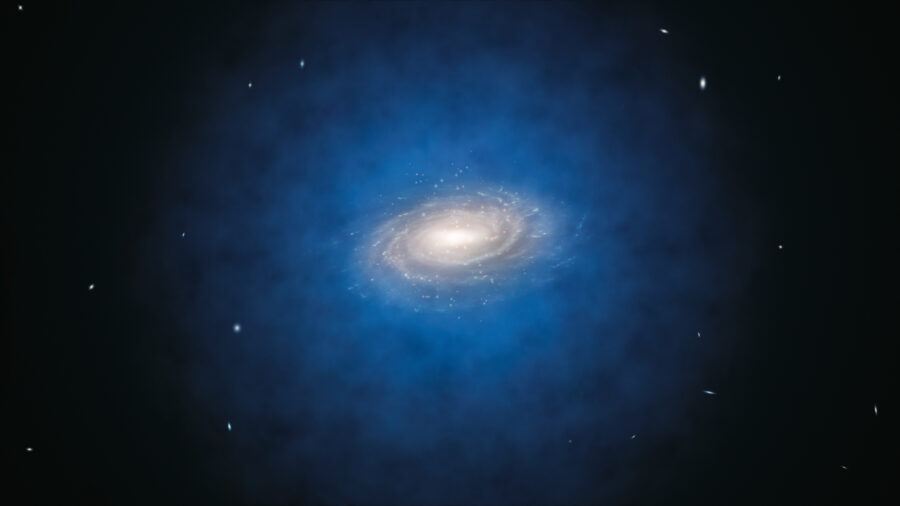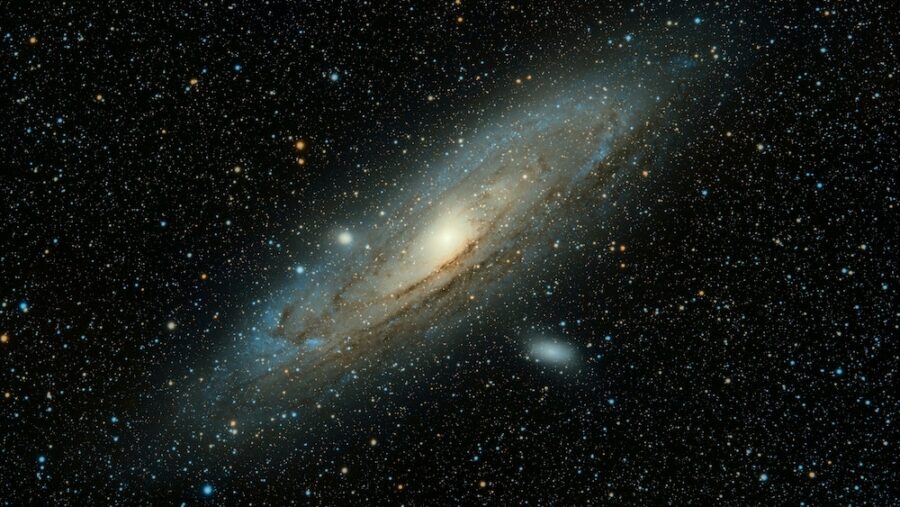Copycat Galaxies Discovered That Shouldn’t Exist

The James Webb Space Telescope (JWST) has discovered more than 1,000 galaxies that eerily resemble our own Milky Way. These copycat galaxies, with their familiar spiral arms and distinctive warping akin to a vinyl record, were found lurking in the depths of space more than 10 billion years ago, according to a report by Live Science.
“For over 30 years, it was thought that these disk galaxies were rare in the early universe due to the common violent encounters that galaxies undergo. The fact that JWST finds so many is another sign of the power of this instrument and that the structures of galaxies form earlier in the universe, much earlier, in fact, than anyone had anticipated.”
Leonardo Ferreira, the University of Victoria in Canada
What makes the discovery truly astonishing is that the presence of copycat galaxies contradicts long-held beliefs about the tumultuous nature of the early universe and galaxy formation. New research suggests that these Milky Way doppelgangers were 10 times more common in the early universe than previously thought, deepening the mystery surrounding life itself.
The revelation came after the James Webb Space Telescope peered back to an era when the universe was still in its infancy. Violent galactic mergers were believed to be the primary force shaping the cosmos. Astronomers had long held the belief that copycat galaxies, with their delicate spiral arms and orderly disks, should have been non-existent, given the chaotic nature of galactic encounters.
However, old beliefs were squashed after the JWST scanned the cosmos from nine billion to 13 billion years ago. Among the 3,956 galaxies spotted by the telescope, 1,672 were found to be copycat disk galaxies closely resembling our Milky Way. What makes the find even more astonishing is that many of these galaxies existed when the universe was just a few billion years old.

Lead study author Leonardo Ferreira, an astronomer at the University of Victoria in Canada, emphasized the significance of copycat galaxies, stating, “For over 30 years, it was thought that these disk galaxies were rare in the early universe due to the common violent encounters that galaxies undergo. The fact that JWST finds so many is another sign of the power of this instrument and that the structures of galaxies form earlier in the universe, much earlier, in fact, than anyone had anticipated.”
Astronomers had long held the belief that copycat galaxies, with their delicate spiral arms and orderly disks, should have been non-existent, given the chaotic nature of galactic encounters.
Traditional theories of galaxy formation began about one to two billion years into the universe’s existence when the earliest star clusters were believed to have evolved into dwarf galaxies. Over time, these dwarf galaxies were thought to engage in cosmic cannibalism, merging and colliding to eventually give rise to large galaxies like the Milky Way, albeit after 10 billion years of evolution.
The Milky Way, characterized by its iconic spiral arms and a sombrero-like appearance, represents a common galaxy type in today’s universe. However, during the universe’s early stages, astronomers had assumed that the tumultuous environment would swiftly deform such galaxies. This assumption, as it turns out, was incorrect due to the discovery of copycat galaxies.
New research suggests that these Milky Way doppelgangers were 10 times more common in the early universe than previously thought, deepening the mystery surrounding life itself.
Christopher Conselice, a professor of extragalactic astronomy at the University of Manchester and a study co-author, pointed out that the Hubble Space Telescope gave scientists a different understanding of the universe. It suggested that disk galaxies were exceedingly rare until the universe reached an age of approximately six billion years. However, the JWST indicates that copycat galaxies began forming near the universe’s inception.
The discovery of copycat galaxies has profound implications within the scientific community. These newly found galaxies challenge conventional wisdom and deepen the mystery of how large galaxies and life first came into existence in our universe. As astronomers continue to unravel the secrets of the cosmos, the JWST stands as a testament to the enduring quest to unlock the mysteries of the universe.












